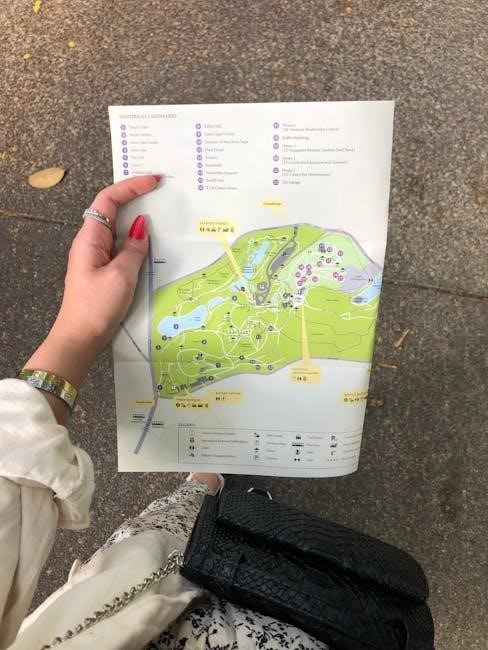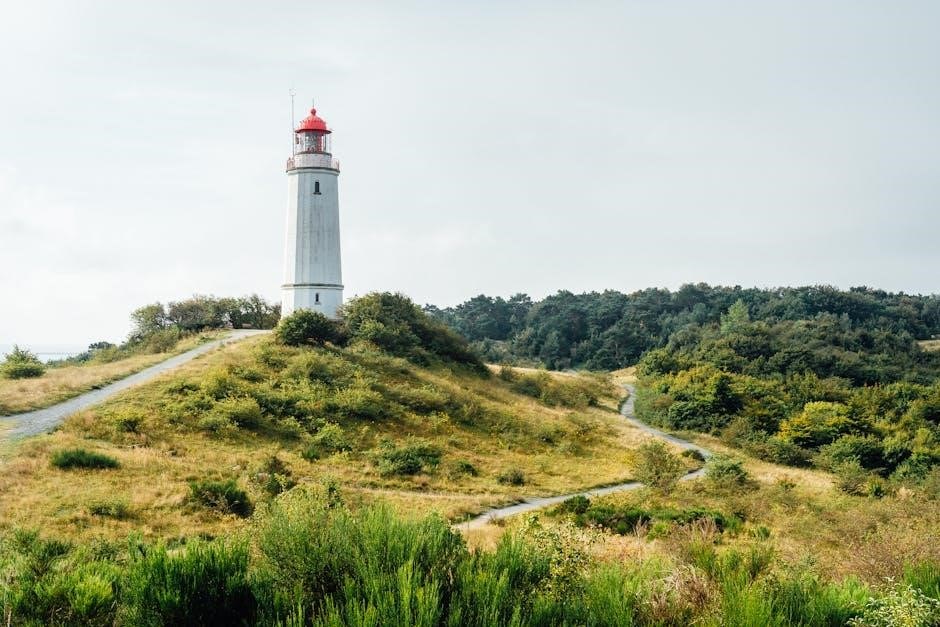
planting guide for zone 6a
Understanding USDA Hardiness Zone 6
The USDA Plant Hardiness Zone Map helps gardeners ascertain which perennial plants will thrive in a location. Zone 6 experiences seasonal changes‚ transitioning from cold winters to warm summers. It’s divided into 6a and 6b‚ based on minimum winter temperatures. Understanding this zone is crucial.
Defining Zone 6: Temperature Range
Zone 6‚ a key area for gardeners‚ is characterized by its specific temperature range that significantly influences plant survival and growth. This zone experiences average annual minimum winter temperatures between -10°F and 0°F. This temperature range dictates which plants can withstand the cold winters typical of regions within Zone 6.
Understanding these temperature parameters is crucial for selecting appropriate plants. The USDA Plant Hardiness Zone Map‚ the standard for gardeners‚ uses these temperatures to define zones. Knowing that Zone 6 encounters these minimum temperatures enables gardeners to choose perennials likely to thrive.
The frost-free growing period in Zone 6 generally extends from mid-May through mid-October. This period allows for a diverse gardening calendar‚ accommodating various plants. The distinct seasonal changes‚ with cold winters and warm summers‚ provide a good environment for growth.
Gardeners in Zone 6 can leverage this knowledge to plan their planting schedules effectively. The temperature range serves as a fundamental guide‚ ensuring that plants selected are well-suited to endure the local climate. Ignoring this can lead to plant failure.
Zone 6a and 6b Subdivisions
Zone 6‚ like other zones on the USDA Plant Hardiness Zone Map‚ is further subdivided into two half zones: 6a and 6b. These subdivisions account for the subtle variations in average minimum winter temperatures within the broader Zone 6 classification. Understanding these nuances is essential for fine-tuning plant selection.
Zone 6a experiences slightly colder average minimum winter temperatures‚ ranging from -10°F to -5°F (-23.3°C to -20.6°C). This subzone requires gardeners to choose plants that can tolerate the more extreme cold. Selecting plants rated for Zone 6 or lower is generally recommended for success in Zone 6a.
In contrast‚ Zone 6b has slightly milder average minimum winter temperatures‚ ranging from -5°F to 0°F. Gardeners in Zone 6b have a slightly broader range of plant choices‚ but hardiness remains a key consideration. Plants rated for Zone 6 are typically suitable‚ and some Zone 7 plants may also thrive in protected locations.
The distinction between 6a and 6b highlights the importance of local climate knowledge. Even within the same zone‚ microclimates and subtle temperature variations can impact plant performance. Paying attention to these details enhances gardening outcomes.

Optimal Planting Times for Zone 6
Zone 6 enjoys a diverse gardening calendar‚ from cold winters to warm summers. Spring‚ summer‚ and fall are great times to consider planting shrubs and trees. Knowing the appropriate planting times ensures plants establish well and thrive in Zone 6.
Spring Planting in Zone 6
Spring in Zone 6 presents a prime opportunity to introduce a variety of plants to your garden. As nightly temperatures consistently reach at least 35°F‚ it signals a safe time to begin planting. Early perennials particularly benefit from spring planting‚ allowing them ample time to establish strong root systems before the onset of summer heat.
Consider starting cold-weather crops like lettuce‚ radishes‚ and peas as early as March. These vegetables thrive in the cooler temperatures and can provide an early harvest. For other vegetables‚ refer to a Zone 6 planting calendar to determine the best time to sow seeds indoors or directly into the garden.
Remember that May is typically the month when Zone 6 experiences its last frost. After this date‚ tender seedlings can be safely transplanted outdoors. This includes popular garden varieties like tomatoes‚ peppers‚ and cucumbers. With careful planning and attention to local weather conditions‚ spring planting in Zone 6 can yield a bountiful and beautiful garden throughout the growing season.
Fall Planting in Zone 6
Fall planting in Zone 6 offers a unique opportunity to extend the gardening season and prepare for the following spring. As the weather cools off‚ it’s an ideal time to plant trees and shrubs‚ allowing them to establish roots before winter dormancy. Aim to complete fall planting before the ground freezes to ensure successful establishment.
Consider planting spring-blooming bulbs like tulips‚ daffodils‚ and hyacinths in the fall. These bulbs require a period of cold dormancy to trigger their vibrant blooms in the spring. Additionally‚ certain cool-season vegetables‚ such as spinach‚ kale‚ and garlic‚ can be planted in the fall for a late-season harvest or an early spring crop.
Fall planting also provides an opportunity to improve soil health by adding compost or other organic matter. This will enrich the soil and provide essential nutrients for plants as they begin to grow in the spring. With careful planning and attention to local weather conditions‚ fall planting in Zone 6 can lead to a thriving garden that bursts with life in the spring.

Recommended Plants for Zone 6
Zone 6 supports a wide array of plants‚ including hardy perennials‚ shrubs‚ and cool-season vegetables. Consider asters‚ coneflowers‚ and hostas for perennials. Gurneys offers a wide selection of annual and perennial vegetables for Zone 6‚ from asparagus to zucchini.
Perennial Flowers for Zone 6
Zone 6 offers a vibrant selection of perennial flowers that can thrive with proper care. Early perennials have more time to establish before winter sets in. Consider incorporating asters‚ known for their late-season blooms‚ or astilbe‚ which provides feathery plumes and thrives in partial shade. Bee balm is another excellent choice‚ attracting pollinators like butterflies and hummingbirds to your garden. Coneflowers‚ with their daisy-like appearance and drought tolerance‚ are also a popular option.
Don’t forget the classics like crocuses‚ daffodils‚ hyacinths‚ irises‚ lilies‚ peonies‚ phlox‚ salvia‚ sedum‚ tulips‚ and yarrow. These provide a spectrum of colors and textures throughout the growing season. Hostas‚ with their diverse foliage‚ are perfect for adding visual interest to shady areas. Delphiniums offer towering spires of blooms‚ while hibiscus brings a touch of the tropics to your garden. Remember that your Zone 6 garden may have microclimates‚ so observe your yard to find the perfect spots for each plant.
Butterfly bushes are wonderful pollinator attractors and thrive in Zone 6‚ provided they are properly maintained. These perennials return year after year‚ bringing beauty and life to your Zone 6 garden.
Vegetables for Zone 6
Zone 6 offers a favorable environment for growing a wide array of vegetables‚ thanks to its medium-length growing season. Most vegetable varieties will mature before the first frost. In Zone 6‚ common garden vegetables perform well‚ offering a bountiful harvest. Gardeners can add to and plant vegetables throughout the season‚ maximizing their yield.
Consider planting cold-weather crops like lettuce‚ radishes‚ and peas as early as March‚ sowing them directly outside. Other vegetables that thrive in Zone 6 include beans‚ carrots‚ kale‚ strawberries‚ and tomatoes. Asparagus‚ particularly the AsparaBest variety‚ is a great perennial choice‚ while Black Magic Zucchini Squash provides a prolific summer harvest.
Remember to consult a planting calendar tailored to Zone 6 to determine the best times for starting seeds indoors‚ transplanting seedlings‚ and direct sowing vegetables into the garden. This will ensure optimal growth and a successful vegetable gardening experience. With proper planning‚ Zone 6 gardeners can enjoy a diverse and abundant harvest throughout the growing season.

Gardening Tasks by Season in Zone 6
Zone 6 gardening involves distinct seasonal tasks. Spring‚ summer‚ and fall are ideal for planting shrubs and trees. Fall planting should begin as weather cools‚ finishing before the ground freezes. As cold weather arrives‚ gardeners prepare for winter.
Preparing for Winter in Zone 6
As winter approaches in Zone 6‚ preparing your garden is essential for plant survival. The average minimum winter temperatures in Zone 6 range from -10°F to 0°F‚ demanding proactive measures. Begin by mulching around perennial plants to insulate their roots and protect them from freezing temperatures. A thick layer of mulch‚ such as straw or shredded leaves‚ helps retain soil moisture and prevent temperature fluctuations that can damage plant tissues.
For more delicate plants‚ consider providing additional protection like burlap wraps or cold frames. These barriers shield plants from harsh winds and heavy snow‚ reducing the risk of winter burn and breakage. Additionally‚ ensure proper drainage in your garden beds to prevent water from pooling and freezing around plant roots‚ which can lead to root rot.
Before the first frost‚ prune any dead or diseased branches from trees and shrubs to promote healthy growth in the spring. Finally‚ gather and compost fallen leaves and debris to eliminate potential sources of pests and diseases. These steps ensure your Zone 6 garden is well-prepared to withstand the challenges of winter and emerge vibrant in the spring.

Utilizing Microclimates in Zone 6 Gardens
Even within Zone 6‚ microclimates can significantly influence plant growth‚ creating warmer or cooler pockets that affect which plants will thrive. South-facing walls‚ for example‚ absorb and radiate heat‚ creating a warmer microclimate ideal for heat-loving plants. Conversely‚ north-facing areas tend to be cooler and shadier‚ suitable for plants that prefer cooler conditions. Understanding these variations can expand your planting options.
Consider using structures like fences or hedges to create windbreaks‚ protecting sensitive plants from harsh winter winds. Raised beds can improve drainage and warm up faster in the spring‚ extending the growing season. Additionally‚ water features can moderate temperature extremes‚ benefiting plants nearby. Observe your garden throughout the day and year to identify these microclimates.
Experiment with different plant placements to maximize their potential. By understanding and utilizing these microclimates‚ you can create a diverse and thriving Zone 6 garden‚ tailored to the specific conditions within your landscape. This approach enhances plant health and productivity‚ ensuring a vibrant and successful gardening experience.